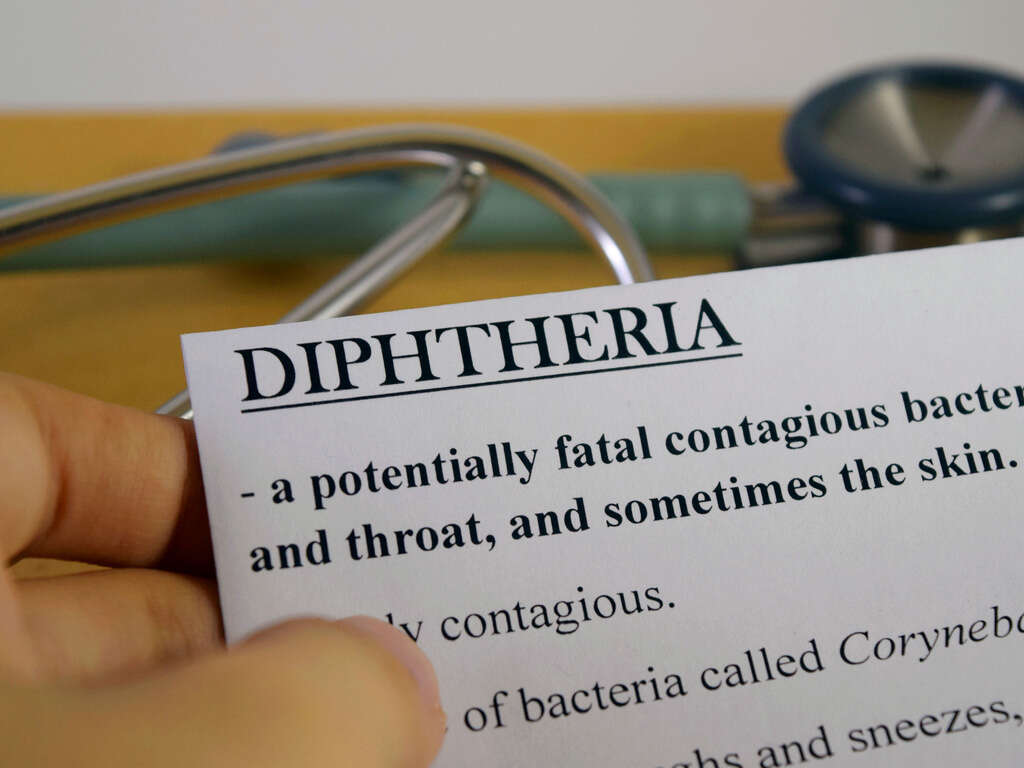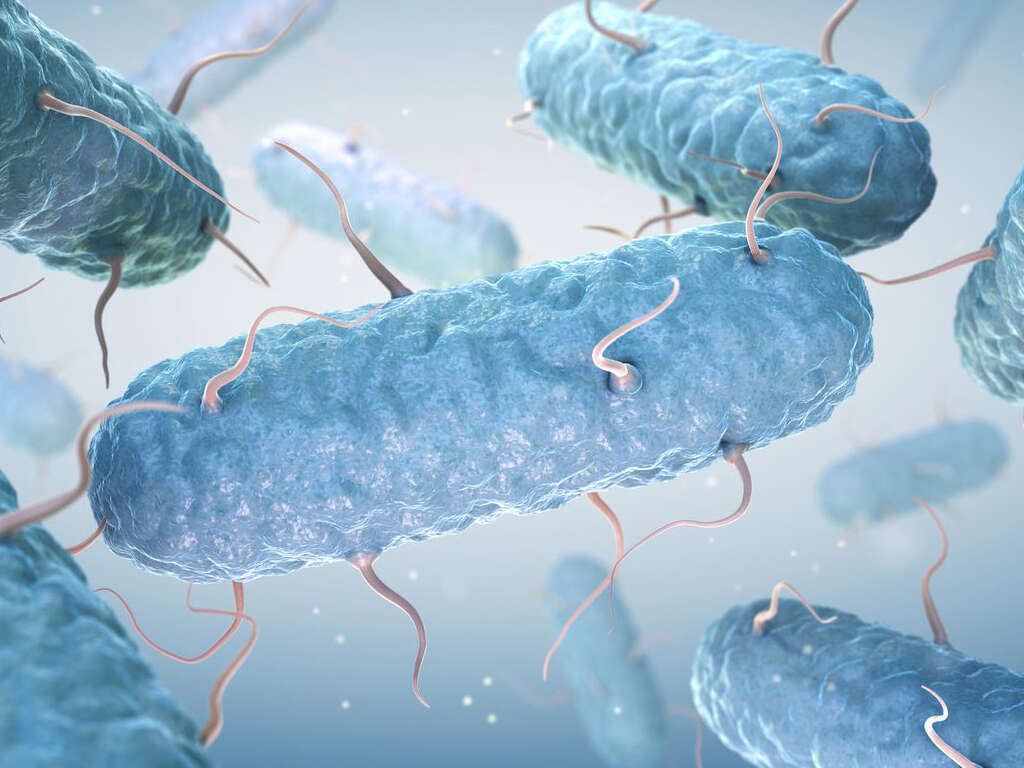10 Diphtheria Symptoms
Diphtheria is a condition caused by the Corynebacterium diphtheriae bacterium. The infection can range from mild to severe. Symptoms begin two to five days after exposure, either by direct contact with infected individuals or contaminated objects, or by exposure to contaminated air. Some individuals are asymptomatic but are still able to spread the disease to others.
Diphtheria can be diagnosed through a microbiological culture. A vaccine for diphtheria is available and should be administered in three or four doses (along with pertussis and tetanus vaccines) during childhood. In addition, booster doses of diphtheria and tetanus vaccines should be given every ten years. Immunity from the disease can be determined by measuring the level of antitoxin in the blood. Diphtheria is treated using erythromycin or penicillin. In severe cases, a tracheotomy may be necessary to ensure there is a patent airway for respiration.
Diphtheria is rare in the developed world because vaccination is widespread. The most recent studies from the CDC estimate that less than 20 cases have been reported in the US during the period of 1996 to 2016.

Symptom #1: Sore Throat and Hoarseness
A sore throat is pain, discomfort, or irritation of the throat. It is most commonly caused by pharyngitis, tonsillitis, or trauma.
Pharyngitis is inflammation of the throat, while tonsillitis is inflammation of the tonsils. Pharyngitis and tonsillitis can be caused by viral infections and bacterial infections.

Symptom #2: Fever and Chills
Fever occurs when the set point of body temperature is elevated above normal. It is a nonspecific symptom that can be seen in many diseases and infections. In diphtheria, patients usually experience a low-grade fever. The fever will be accompanied by other symptoms, such as sore throat, hoarseness, cough, headaches, and difficulty breathing.
When the set point of body temperature increases, the body tries to reach the higher temperature. Chills or rigors often accompany a fever, which cause a sensation of cold as well as shivering. The repeated muscle contractions caused by shivering help increase body temperature as the body continuously tries to produce and conserve more heat.

Symptom #3: Lymphadenopathy
Lymphadenopathy is a disease of the lymph nodes where the size, or consistency of the lymph nodes is abnormal. It is a nonspecific and common sign that is often caused by various infections, autoimmune diseases, cancers, and bites from insects or animals. In clinical practice, the terms lymphadenopathy and lymphadenitis can be used interchangeably.
Lymphadenitis is the inflammation of the lymph nodes, which causes the lymph nodes to be swollen and enlarged. In diphtheria, the lymph nodes in the neck are most likely to be involved, causing the neck to become enlarged, which is referred to as a “bull’s neck”.

Symptom #4: Arrhythmia and Paralysis
Arrhythmia, or abnormal heart rhythm, occurs when the electrical system of the heart malfunctions, causing the heart to beat too fast, too slow, irregularly, or not at all. In diphtheria, abnormal cardiac rhythms can occur several weeks after the throat symptoms disappear and can result in heart failure and death.
Diphtheria can also cause paralysis in the throat, neck, eyes, and respiratory muscles, making it difficult to breathe or swallow. Patients with these severe diphtheria symptoms should be admitted to an intensive care unit and given the diphtheria antitoxin.

Symptom #5: Difficulty Breathing and Swallowing
Difficulty breathing is also known as dyspnea or shortness of breath. It occurs when a person feels a tightness in the chest and must make an increased effort to breathe normally.
In diphtheria, the toxin produced by the Corynebacterium diphtheriae bacterium can create a membrane or a thick, whitish-gray, fuzzy coating in the airway, throat, or nose, which makes it difficult to breathe and swallow.

Symptom #6: Fatigue
Fatigue is a gradual feeling of tiredness that can be alleviated by periods of rest. It is a nonspecific symptom that can be seen in various conditions and diseases, such as overworking, stress, boredom, jet lag, depression, inadequate sleep, nutritional deficiencies, autoimmune diseases, blood disorders, and cancer. Fatigue can be physical or mental.
Physical fatigue occurs when the body’s muscles are unable to maintain their optimal performance while mental fatigue is a temporary decrease in cognitive performance. Both physical and mental fatigue can manifest as lethargy or somnolence.

Symptom #7: Cyanosis
Cyanosis refers to the purplish or bluish discoloration of the mucous membranes and skin due to low oxygen saturation. It is most commonly seen in the lips and fingers. There are two types of cyanosis: central and peripheral. Central cyanosis occurs when there is poor blood oxygenation in the lungs, which causes discoloration in the mouth. Peripheral cyanosis occurs when inadequate or obstructed circulation causes discoloration in the hands and feet.
There are many possible causes of cyanosis, such as pneumonia, pulmonary embolism, heart failure, hypoventilation, and myocardial ischemia. In diphtheria, cyanosis occurs as membranes in the airway block respiration, causing difficulty breathing and low oxygenation.

Symptom #8: White Or Grey Membrane
The formation of a white or greyish lining in the throat is characteristic of patients with diphtheria.
This is called pseudomembrane and it can develop anywhere in the respiratory tract. It is present in more than 50% of patients suffering from this condition and it is associated with many of the respiratory symptoms like coughing and dyspnea.

Symptom #9: Headache
A headache is pain or discomfort anywhere in the neck or head. It is a common and nonspecific symptom seen in various conditions and diseases, such as stress, dehydration, tiredness, hunger, infections, high blood pressure, and cancer. Headaches are classified based on the location and characteristics of the pain.
Types of headache include migraines, tension headaches, and cluster headaches. Management and treatment often involve painkillers, such as acetaminophen and nonsteroidal anti-inflammatory drugs (NSAIDs).

Symptom #10: Nasal Discharge
Mucus traps debris, bacteria, and other germs in the nose to prevent these substances from entering the lungs. Nasal discharge refers to the release of mucus from the nose. It is a common and nonspecific symptom that can be observed in many conditions, such as allergies, colds, and viral infections. In diphtheria, the nasal discharge is often foul-smelling and bloodstained.
Seek medical attention if you suspect diphtheria since treatment should be given as soon as possible to avoid serious complications or death.












